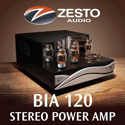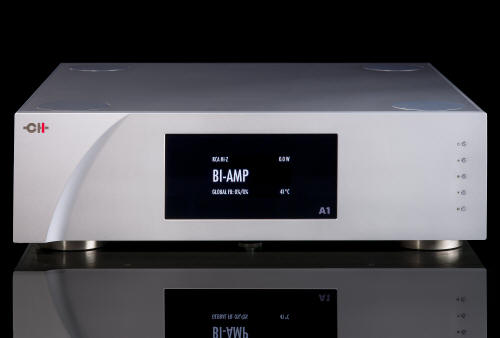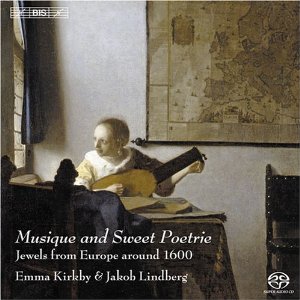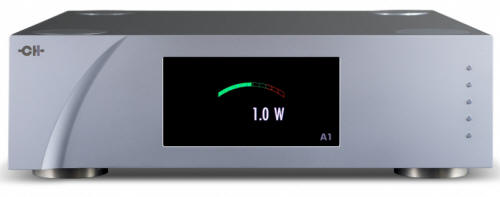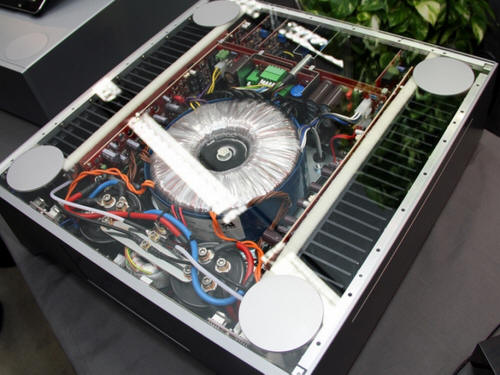|
|
You are reading the older HTML site
Positive Feedback ISSUE 71
ch precision A1 Amplifier - The Bar is Moving as reviewed by Marshall Nack
Every group has its complainers. You've heard them, the guys who whine about the static state of the high-end, with a constant refrain, "There's nothing new under the sun. All we do is rehash designs invented last century…" and so forth. How can they say that? I mean, just look around. On the software side, has analog ever had anything like the current crop of 45 rpm LPs? On the digital side, anything like the hi-res files we have now? As for hardware, in my chosen milieu of the upper reaches of the high-end, I can attest the bar has been steadily advancing. And just look at all the important breakthroughs and good sounding gear in the sub $1,000 category. Contrary to the complainers, the high end has never had it better. We live in particularly exciting—even amazing—times. The state of the art is in dynamic flux and the bar is moving. If you don't know what I'm talking about, you aren't looking in the right places. Or maybe you are comfortable where you are and prefer things to stay the same. What triggered these perambulations was the spate of product coming through lately, each nudging at the envelope, one after the other. It has led me to jettison the old component evaluation template I had been using since day one. That checklist includes things like grain, edge, noise or discontinuous frequency response. I can't recall the last time I reviewed a component that exhibited those things. So, if every product scores well on the audiophile report card, does it make sense to continue to use it? At this point, I figure the checklist items are worth mentioning in passing, but not dwelling on them. OK. So what then? I think the questions to be raised when evaluating a product such as the CH Precision A1 amp, are: How does the component affect the listener? Is it engaging?
First Impressions The CH Precision A1 amp quickly dismissed the checklist criteria. It was immediately apparent that Class A was met—and exceeded—in most categories. I will present two musical examples to demonstrate the range of this amplifier.
Let's begin with Emma Kirkby, the celebrated Baroque chanteuse, on Musique and Sweet Poetrie (BIS-SACD-1505), accompanied by Jakob Lindberg on lute. Emma's high soprano is the perfect vehicle for the dulcet tones of these "Jewels from Europe around 1600," with crystalline purity of tone and unwavering intonation. The recording was made in an empty church with just the two musicians on stage. My attention is drawn to the graphic display on the A1 front panel. (The A1 has a large display panel that can be set to monitor a range of functions, including output power, internal temperature, operating mode, and more.) What I see there startles me.
Most of the time it is sooo quiet and the meter reads under 1 watt. Occasionally Emma's voice registers peaks of 14. The A1 is dynamic as hell, even with a solo female voice. But often there is silence—except the meter is still moving around registering signal activity. (In the actual inter-track dead spots, the meter is flat-out zero and doesn't budge.) Affinity to the Trinity Preamp: Silence Is Not Emptiness Wow! This is exciting! Something is happening on the stage, activity that the listener may not consciously register. This proposition first popped up when I installed the Trinity Preamp several months ago. I began that review with an arcane discussion about the quality of silence; specifically, the idea that human beings on a stage never present a vacuum—when people are present there's always something happening.
At the time I wrote that review, this idea was speculative. All I had was subjective reports, impressions of "a presence" in the silence. You may not hear it— I don't know how many of us can hear this. It depends on your acuity—and your gear. We're talking about extremely low-level material. But that it exists is now incontrovertible. Here's the proof I needed—the meter fluctuating in the silence. The Trinity Pre does it; the CH A1 and my Soulution 710 amplifiers do it. Beyond that select group, I've never encountered this phenomenon before. the Woof and the Wow! There's another affinity between the Trinity and the CH A1. My YG Anat speakers love power. Ordinarily, they chuckle at 100 watts, quipping "Is that all?" and beg for more. The only reason my Soulution 710 is able to drive them with its 120 watts is because of its massive 60 amp current capability.
Amazingly, the CH, which is physically half the size and weight of the Soulution and with very nearly the same power specs (100 watts into 8 ohms), is able to drive the Anats even higher. The A1 dynamic range is vast, even as it remains clear with no evidence of breakup. Compared to other amps I've tried, dynamic range seems to be without limitation. (I found this the case with the Trinity Preamp as well. Interesting that they share the same importer.) Adjust your volume carefully. With an uncompressed source, you might find you have to ride the volume control. The A1 will take a piece like Ravel's Bolero, which begins at a low SPL, but continuously builds, to heights that may stress your ears.
What accounts for this prowess? I was at a loss to explain it in the Trinity Preamp: I'm still at a loss now with the A1. Look at the photo of the interior of the chassis. An oversized, 1200 VA mains transformer takes up nearly 50% of the internal footprint and probably accounts for most its 90lbs. I'm sure it's a key part of the answer, but exactly how it factors in, I don't know. These two components are as good as I've heard at rendering the dynamic extremes. But, in truth, it's what happens in that grey area between the liminal and the subliminal (see *Note) that's most impressive: the details in the silence, the revelation of activity in the quiet. *Note: From Dictionary.com: Liminal - relating to the point (or threshold) beyond which a sensation becomes too faint to be experienced Subliminal - existing or operating below the threshold of consciousness; being or employing stimuli insufficiently intense to produce a discrete sensation but often being or designed to be intense enough to influence the mental processes or the behavior of the individual: a subliminal stimulus; subliminal advertising. The Blend: Hi-Res + Musical The A1 also has resolution like you've never heard, right up alongside the Soulution 710. The major difference between the two amps is that the Soulution is tighter and more focused, with images that have just enough flesh and no excess. It shows the details in high relief. With the CH, the details are all there, but not in such high relief. Comparatively, the CH gives the impression it is relaxed, even a bit soft. Compounding that impression, the A1 is very fleshy from top to bottom and its tonal balance will leave you guessing about what's inside. The treble is harmonically rich; midrange is dominant; bass is a bit warm and could have more texture. If you didn't know it, you would be hard pressed to guess its topology—might there be some valves in under the hood? (This impression is directly related to choices made in a few User Selectable settings we'll get to shortly.) Getting Familiar A week or so in, Lynn observed: "Is it just me, or does everything sound good?" Hmm…my antennae began to quiver. I dredged up an historic LP featuring the great playing (and bad audio) of the principals of the Philadelphia Orchestra circa 1952, First Chair (Columbia ML 4629). She was right: even that sounded better than I recalled. (But what wonderful insights were afforded into the instrumentalist's technique! It held us spellbound. Lynn and her teachers study these old recordings.)
The A1 puts the presentation in its best light. Imagine you were a theatre director and you decided to make a scene look ugly. There are tools to do this: you can flood the stage with harsh, bright overheads. Alternately, let's say you wanted to evoke romance: then you'd use soft white with rose filter gels. To some degree the A1 imposed a rose filter that made the wrinkles less noticeable, even as it exposed more details than ever. The A1 is a blend, an example of the new generation of gear with characteristics of tubes and solid-state. The A1 swerves a bit towards musicality, where the Soulution is the poster child for neutrality. This is another affinity between the A1 and the Trinity Preamp. Cosmetics Take a look at this photo of the CH A1 sitting atop my Soulution 710 (with a TAOC board and footers between them).
The aesthetic commonalities are striking: the satiny aluminum chassis; the squared-off corners with no visible screws; the push-button controls next to the display window on the front. The same goes for the back panels in that they are both loaded with an unusual number of In/Out jacks and proprietary switches. You might even be forgiven if you thought the two chassis belong together and were actually a two-box amp. Fit-n-finish on both objects hits the highest industry standards. This must be contemporary Swiss style. Tech Talk The A1, as delivered, is a mono-amp. It can be configured every which-way by using various plug-in option boards (available at extra cost and installed by your dealer). Notes from the website:
This means gain can be optimized to match your linestage and speakers. We heard that owners of YG speakers like mine had a preference for a +3 gain setting, so we experimented. Aside from boosting the volume level, gain adjustments change the sound: the higher gain setting sharpened image edges and made things more precise, less bloomy. Initially, we found this attractive; over time, it was wearing. We set it back to +0. "The analog input stage is a class A full discrete, zero global feedback design… The analog output stage… is built around a class A full discrete ultra-low noise driver and a power stage operated as a pure follower in class AB. The feedback topology of the output stage allows for programmable global or local feedback or a mix thereof. Modifying the feedback ratio between global and local allows for adjustment of the A1's output to match a given loudspeaker…" Likewise, we played around with the global/local feedback ratio. Moving the global setting to negative values was similar to increasing the Gain control. Moving it positive reduced control over the speakers and introduced a softening effect. Once again, I preferred it set to +0, even though it was probably responsible for the slightly warmish bass. Plus, the A1 even has a USB port for firmware updates. It is as future-proof as any component out there. Conclusion When theCH Precision A1 Amplifier first replaced the Soulution 710 stereo amp in my system, I wasn't sure what to expect. I'd only heard it at shows, under less than ideal conditions. Now I can tell you—I'm not rushing to put the Soulution back. Forget about the standard audio report card regarding both of these amps: they are members of what I call the Ultra category and go beyond it. The main difference between them is the Soulution is textbook neutral. The A1 is a sort of hybrid, with a blend of qualities from the musical spectrum voiced in. While rated at only 100 watts, the A1 was very synergistic with my power hungry YG Anat speakers. The specs do not really tell the story. It also had particular synergy with the Trinity Preamp. These electronics elevated the bar to the point where vertigo set in: it was "Look out below!" The sound quality achieved was at the pinnacle. I can guarantee you this: theCH Precision A1 Amplifier will surprise you. Marshall Nack
A1 Power Amplifier
CH Precision
Audioarts
|






